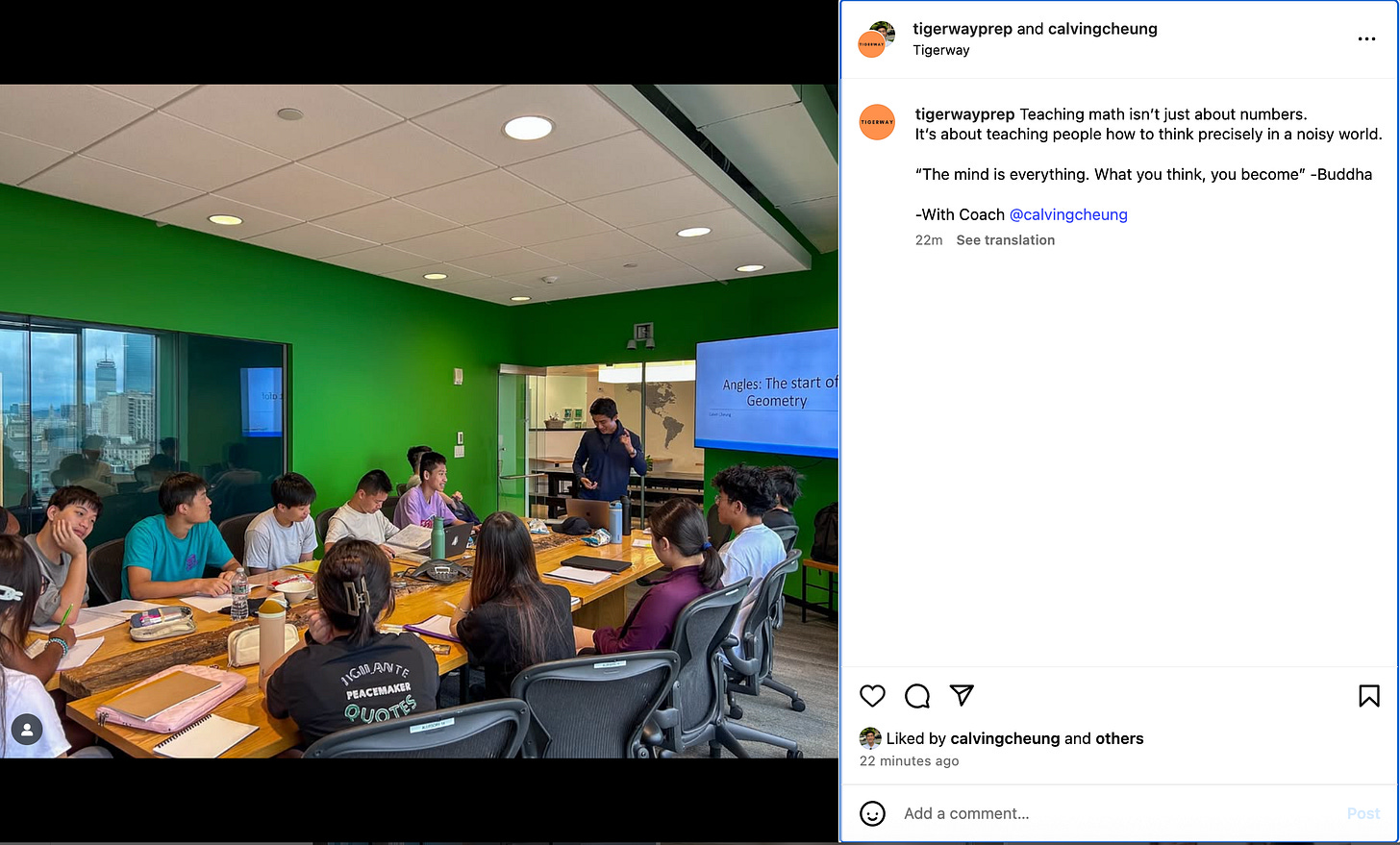Digital SAT Math: What Changes Between Module 1 and 2?
Understanding the Adaptive Math Modules on the Digital SAT
Dear Students and Parents,
As your student prepares for the Digital SAT, it’s critical to understand one of its most powerful — and hidden — features: its adaptive design and how it changes Question Allocation.
Unlike the paper SAT, the Digital SAT adjusts its difficulty and topic frequency based on student performance during the exam. This is especially true in the Math section, which is divided into two modules.
Let’s break it down based on Program Director Calvin’s research - this is him below teaching his in-person coaching program (now on waitlist) in Boston.

How the Adaptive Math Section Works
Module 1: All students receive a mix of easier, medium, and harder math problems.
Based on performance in Module 1, students are routed to either:
A harder Module 2, if they perform well, or
An easier Module 2, if their performance is weaker.
This matters because your total math score depends heavily on which Module 2 you receive.
Why? Because the harder Module 2 unlocks access to the highest scores. In contrast, the easier Module 2 effectively caps how high a student can score—even if they answer all the questions correctly in that second module.
Real-World Example:
Let’s say two students each answer 80% of their questions correctly across both modules.
Student A does well in Module 1 and gets the harder Module 2.
Student B struggles in Module 1 and gets the easier Module 2.
Even with similar overall accuracy, Student A could score a 720, while Student B might be capped at a 620–650 — because the difficulty level of the second module impacts score weighting behind the scenes.
Now there is publicly available data from Bluebook practice tests and released international test forms that sheds light on how topic distribution and question difficulty change between the easier and harder versions of Math Module 2 on the Digital SAT.
Here’s a research-backed breakdown based on current findings from our sources here:
Bluebook Practice Test adaptive pathways
Official College Board explanations
Third-party analyses of international test takers’ survey outcomes
Tigerway’s internal student reports and coaching outcomes
How Math Module 2 Changes: Easier vs. Harder Path
Specific Examples from Bluebook & Real Test Paths
Easier Module 2:
Multiple “plug-and-chug” linear equation problems
Basic system of equations solvable via substitution
Surface area or volume of cubes/prisms
Mean and median from small data sets
Grid-in: solve for x from a simple 2-step equation
Harder Module 2:
Quadratic equations where factoring is non-obvious
Rational functions (domain, asymptotes)
Function composition or inverse functions
Geometry involving algebraic expressions with circle formulas
Grid-in: word problems where students must isolate a target variable through creative setup
Strategic Implications
The Hard Module 2 tests deeper algebraic reasoning, and many students struggle here not because they don't know the content, but because they haven’t built the pattern recognition speed needed for these problems.
The Easy Module 2 doesn’t include many high-yield Advanced Math questions, meaning even perfect accuracy often yields a mid-range score.
Therefore, getting routed into the harder module unlocks both scoring potential and access to college-flagging score bands (700+).
Our program is built to elevate students into the high-difficulty Module 2, where top scorers live. From diagnostic audits to weekly targeted practice, we’re preparing students for this adaptive challenge — not just with content but with strategy and psychology.
Program Director Calvin (617-749-8421, text) knows that the data presented above is ONLY the surface of how to crack the harder Module 2 questions in Math. He has instructed all of our Private Coaches to prepare their students accordingly with tailored strategies.
He forms a strategy discussion with Parents behind how to tailor score raises for a person’s specific set of strengths and weaknesses.
With our in-person class full, we are accepting waitlist inquiries but we do believe the best path forward at this time is to work with our dedicated 1:1 Private Coaches to maximize opportunities for score growth in the weeks ahead.
With July half over, the best prepared students are already on a path towards being very ready for the August and October SATs.
Get in touch with Program Director Calvin to understand how we can take your teen from 1100-1200 to that 1400+ mark which makes all the difference in College Admissions.
-Team Tigerway
Talk to our team at Tigerway directly to discuss how our private coaches can help you with your academic subjects & PSAT/SAT Scores as well as shaping your college profile to best stand out.
Calvin Cheung, Program Director (617-749-8421, text today to book a call)
WeChat ID: CalvinGCheung
Sreya Ravi, Program Officer (774-432-7381, text to book a call)
Jasmine Ngo, Program Officer (781-510-0738, text to book a call)
Website (Many educational Blog Posts): www.tigerwayprep.com
We now have Private Coaches who can help with the following subjects:
SAT 1:1 Private Coaching
ACT 1:1 Private Coaching
Academic High School Courses Private Coaching: High School Algebra 2/Pre-Calculus/Calculus. High School Sciences Biology, Chemistry (Sciences are Limited availability, make sure to inquire early)
1:1 Private Coaching for Long-Term College Application Strategy (how to shape application story/extracurricular selection/common application and supplemental essay mentorship)








